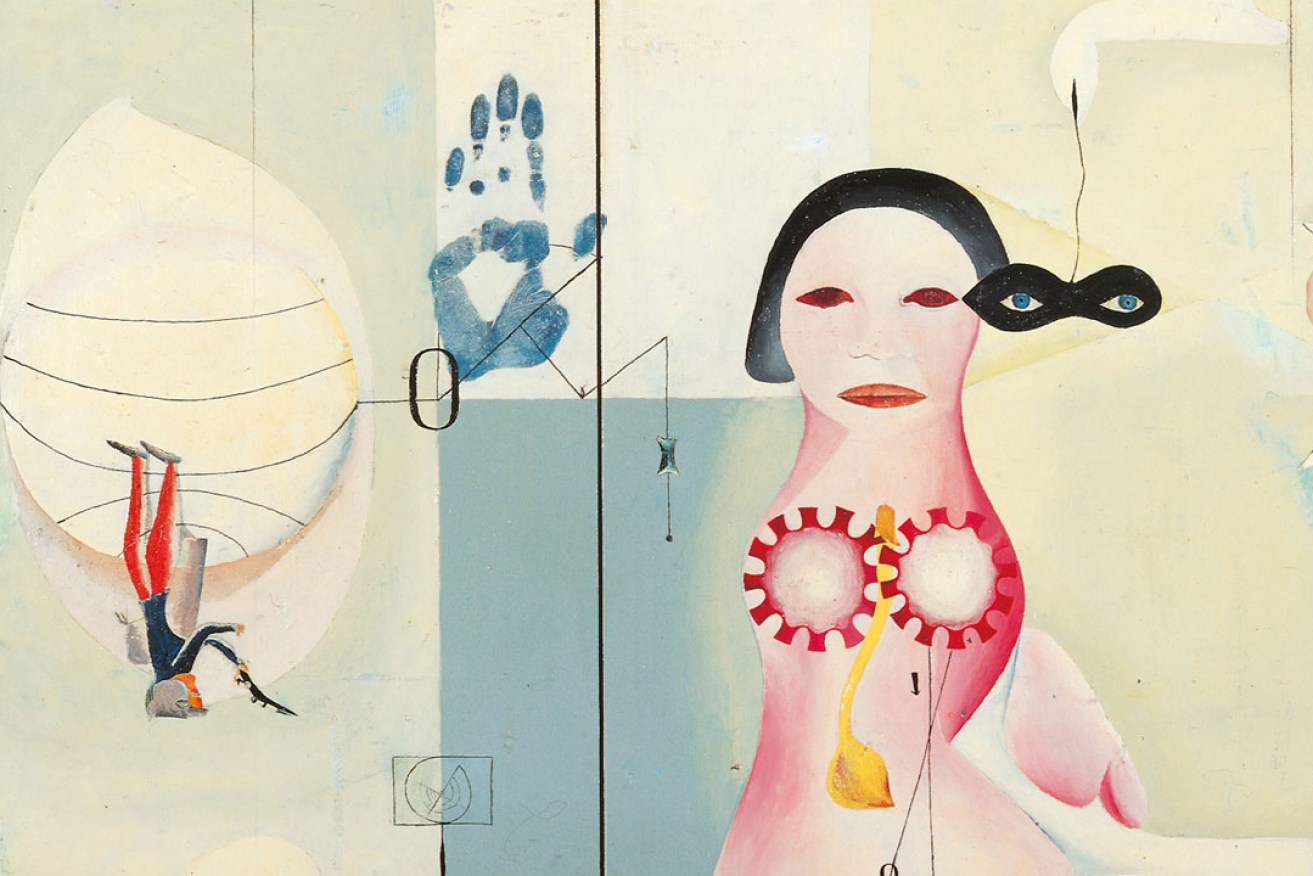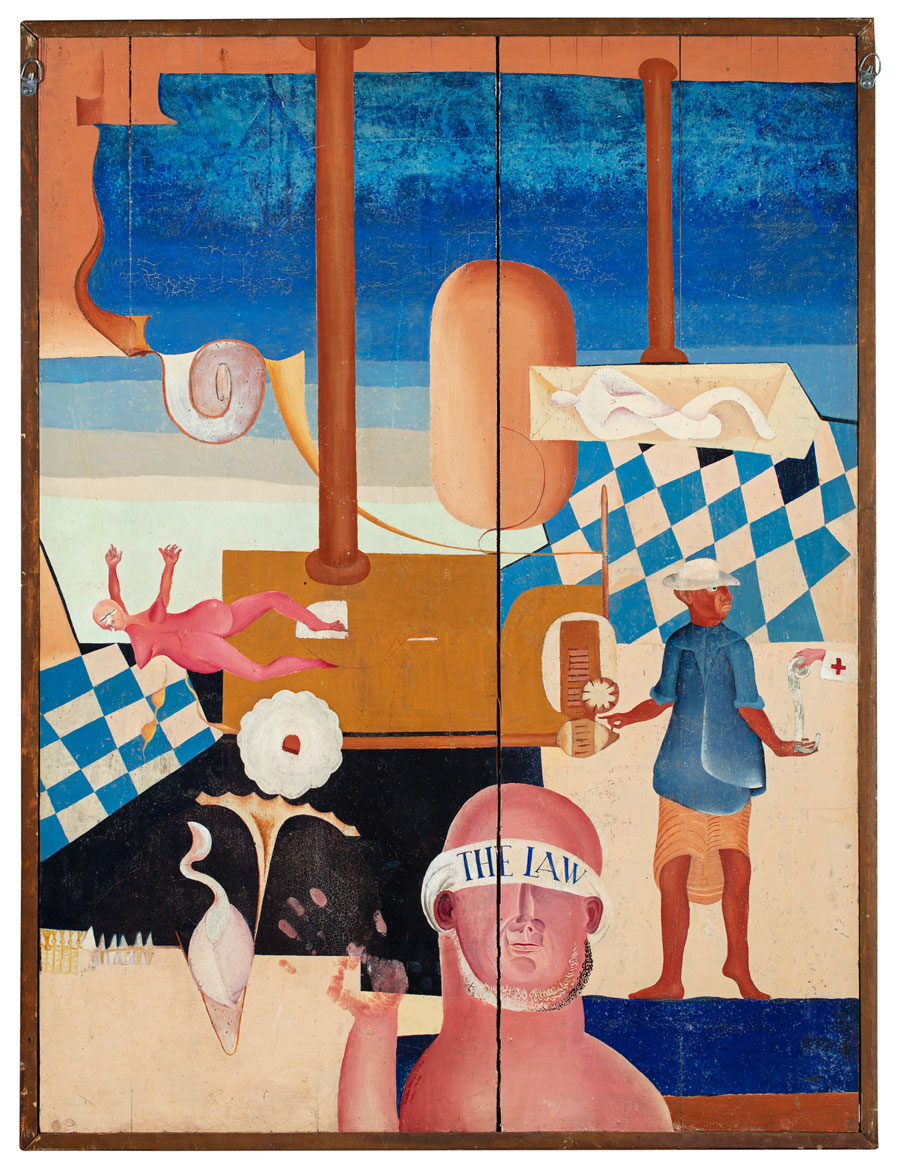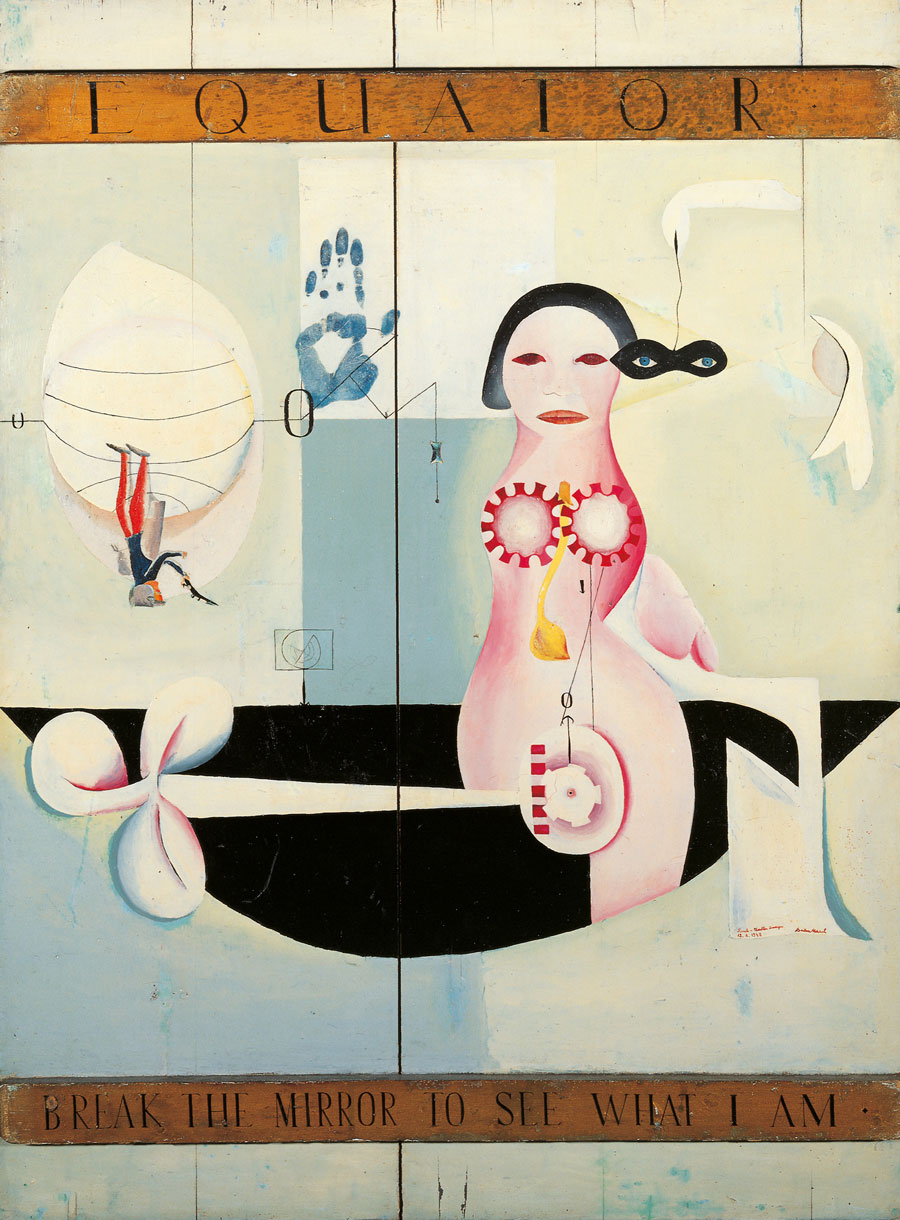Off the Wall: A puzzle picture
A two-sided painting described by an Adelaide critic in 1949 as a vacuous “puzzle picture” – one that would leave “spectators unmoved by any reaction except, ‘Why?’” – now has pride of place in the Art Gallery of SA’s Elder Wing.

Dušan Marek’s Equator (detail), 1948. See full artwork below.
Created on board the SS Charlton Sovereign during Czech-born Dušan Marek’s prolonged sea journey from Europe to Australia, the paintings Perpetuum mobile and Equator continue to sail in a vast sea of sensation and interpretation.
The carefully composed and detailed compositions – of floating figures set within shifting perspectives – are drawn from the artist’s memory and imagination; and by extension, his subconscious. They present an alter-reality, existing beyond rational thought and transcending experiences of the material world.
The paintings were created on both sides of the ship’s gaming table stripped of its felt covering, with no preferred front or back. As a devoted Surrealist, the artist confuses the very logic of seeing.
Within all the works’ ambiguity, the sea and all its marvellousness is the predominant theme. The ocean – which the 22-year-old landlocked artist had never seen before boarding the SS Charlton Sovereign at Bremerhaven, Germany, on August 4, 1948 – is presented as a zone of birth and transformation. Human bodies are locked in union with aquatic plants, and reproductive organs morph into marine accessories and engine parts.

Dušan Marek, Australia, 1926 – 1993, Perpetuum mobile, 1948, SS Charlton Sovereign, oil on board, 121.7 x 91.2cm; South Australian Government Grant 1972, Art Gallery of SA, Adelaide. © AGSA
Bewildered by “the very vastness of the ocean” and at the mercy of its mood and might, the artist created Perpetuum mobile on one side of the wooden panel. The epic scene of life and death takes place at the threshold of sea, land and sky; at its centre an ominous-looking machine is positioned between a woman outstretched giving birth and a white ghostly-figure recumbent in death.
A cogged wheel eerily floating in the foreground appears to drive the fertilisation of the earth next to a divine-like character embodying The Law of the universe itself. Marek’s spiritual reverence for nature, in the face of an uncertain future, endures.
After many delays, the SS Charleton Sovereign finally entered the Southern Hemisphere on October 12, 1948. The artist created a second painting, Equator, on the opposite side of the same panel to serve as the poster for the “Crossing the Line” ceremonies. The celebrations included the ship’s crew serving one glass of pineapple juice to each of the some 700 passengers, almost all sharing the plight of post-war displacement.

Dušan Marek, Australia, 1926 – 1993, Equator, 1948, Gibraltar, SS Charlton Sovereign, oil on board, 121.7 x 91.2cm; South Australian Government Grant 1972, Art Gallery of SA. © AGSA
As if emerging victoriously from the depths of the ocean, Equator depicts a curvaceous pale-pink figure caught in a process of metamorphosis with a jet-black ship. With cogs and gears as reproductive organs and her eyes suspended in a mask, she leaves behind a small shadowed figure holding a gun on the underside of a distant globe.
The addition of text, written in English, “break the mirror to see what I am”, confirms that Marek’s personal journey across a threshold into unfamiliar waters coincided with an exploration into his higher conscious self.
When Equator was exhibited in Adelaide in 1949, it was met with censorship and ridicule.
Australian audiences were yet to appreciate what the artist’s biographer, Bernice Murphy, later called “the poetry and mystery and ultimately, the transcendental character of his art”. In response, Marek took out advertising space in the Adelaide Advertiser, where he had printed:
Man is not privacy.
Break the mirror, which changes your sides.
Empty yourself to see what you are.
For the first time simultaneously, Perpetuum mobile and Equator are on display in the Art Gallery of South Australia’s Elder Wing of Australian art. The artist’s handprint pressed against both sides of the panel – one in flesh pink and the other in ocean blue – emits an immediacy of life and energy that seems to propel us forward and reach us from behind the boundaries of the conscious mind.
Dusan Marek, Perpetuum mobile and Equator, 1948, are currently on display in Gallery 5 of the Elder Wing of Australian Art, Art Gallery of South Australia.
By Elle Freak is assistant curator, Australian Paintings & Sculpture, at the AGSA. This article is part of an InDaily series, Off the Wall, highlighting gallery treasures.




